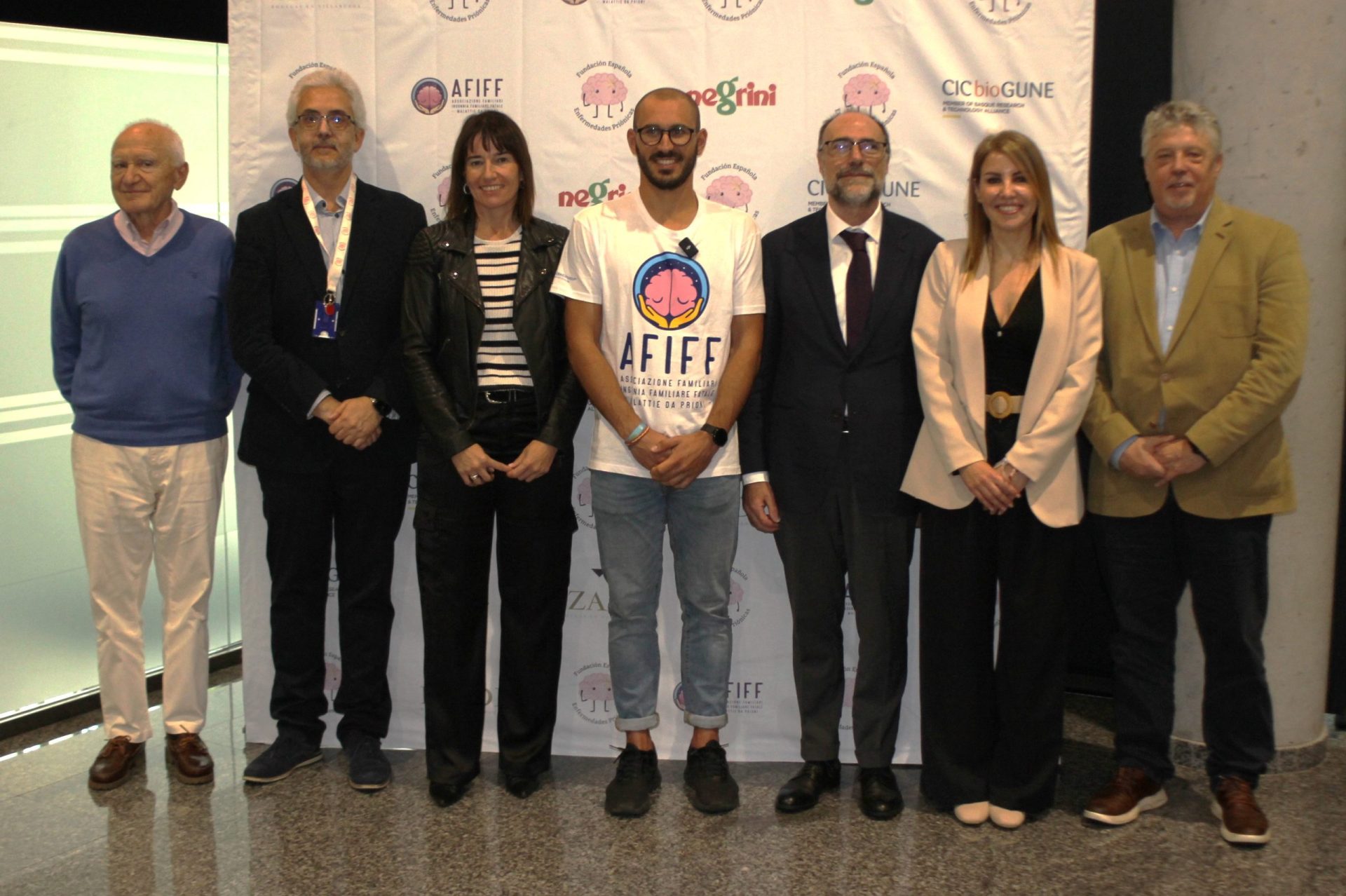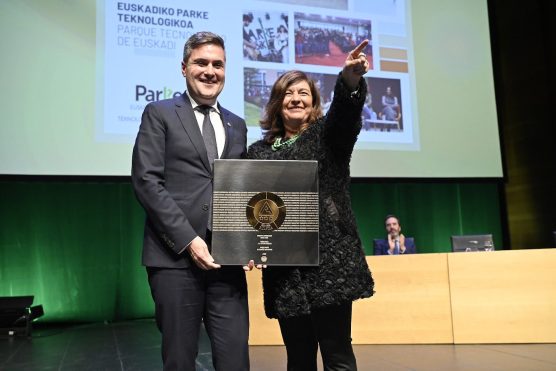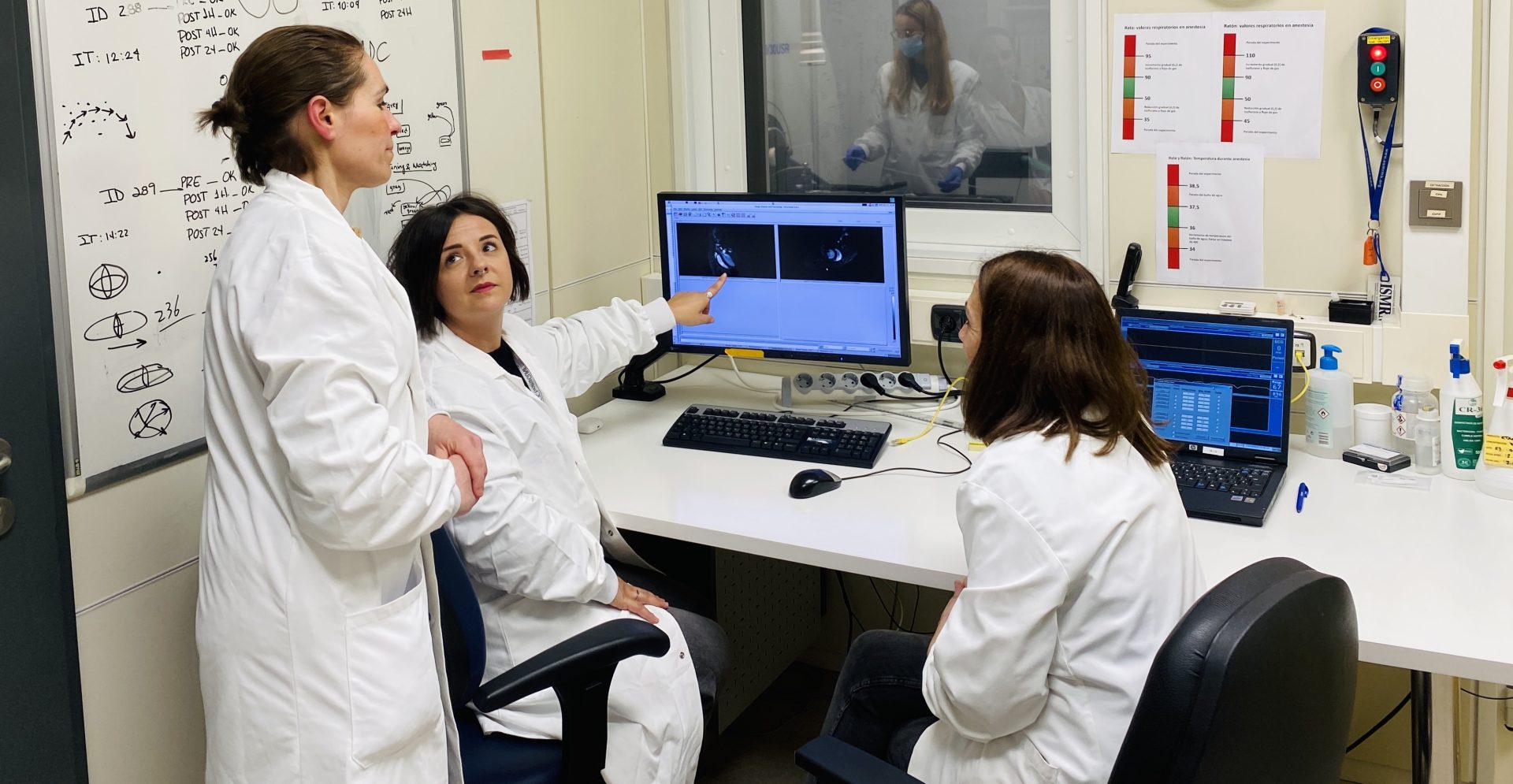More than 2,000 kilometres by bike from Treviso to Bilbao to raise awareness of fatal family insomnia

The tour led by Fabio Mariuzzo, member of the Italian Association of Relatives of People Affected by Fatal Familial Insomnia, which ended today at CIC bioGUNE with a joint dissemination and awareness-raising event with the Spanish Foundation for Prion Diseases, aims to create a synergic network between the different national and international associations involved in research into rare prion diseases.
Italy and Spain concentrate the highest percentages of cases of this disease worldwide, with more than half of the national cases detected in the Basque Country, Navarra, Treviño, Murcia and the Sierra de Segura in Jaén.
It is a very rare hereditary disease, included in the group of diseases caused by prions, which attacks the area of the brain that controls the sleep cycle and whose main symptoms consist of persistent insomnia, weight loss, difficulty in speaking and walking, alterations in the vegetative system, fever and tachycardia.
Fatal familial insomnia is a very rare hereditary disease that is included in the group of diseases caused by prions. It is caused by a mutation of the PRNP gene located on human chromosome 20, which results in the abnormal production of PrPSc (prion protein), an altered derivative of a brain protein that exists in all people. The accumulation of this prion protein causes brain degeneration, particularly affecting the area of the thalamus, leading to persistent insomnia, memory impairment, difficulty moving, weight loss and other neurological symptoms. The disease worsens progressively and with extraordinary speed, with patients eventually slipping into a coma.
Spain and Italy have the highest percentages of cases of this disease worldwide and around half of the people estimated to develop the disease in Spain live in the Basque Country. Navarra, Treviño, Murcia and the Sierra de Segura in Jaén are the other areas where the disease is most prevalent. The neurodegeneration caused by the disease is rapidly progressive and there is no curative treatment.
‘The hypothesis is that this occurs because a first patient carrying the mutation, who is called the founder and whose origin could be Eastern Europe, first migrated to Italy and later settled in Álava, where he had offspring. As it is a dominant hereditary disease, each descendant of a carrier has a 50% chance of inheriting it,’ explains Joaquín Castilla, Ikerbasque researcher at CIC bioGUNE, member of BRTA, and president of the Spanish Prion Disease Foundation.
With the aim of raising awareness of this disease and creating a synergic network between the different national and international associations involved in research into rare prion diseases, Fabio Mariuzzo, a member of the Italian Association of Relatives of People Affected by Fatal Familial Insomnia (AFIFF) has cycled the 2,000 kilometres between Treviso (Italy) and Bilbao. This route is highly symbolic as it is the same one that was made centuries ago by the carrier of the disease, which has led to a high incidence of fatal familial insomnia in Spain.
Fabio Mariuzzo was received by members of the Spanish Foundation for Prion Diseases (FEEP), together with the Italian Embassy, represented by the Embassy’s Scientific Attaché, Prof. Sergio Scopetta. Also present at the visit were the Mayoress of Derio Town Council, Ms. Esther Apraiz Fernández de la Peña, and the Deputy Mayoress, Nekane Aiarza Zallo. Afterwards, the representatives visited the CIC bioGUNE facilities, where they met the centre’s researchers working in the field of prion diseases.
The CIC bioGUNE prion laboratory team, headed by Joaquín Castilla, is currently researching the mechanisms that lead to the formation of prions, the neurotoxic proteins that cause this type of disease, from a harmless version that exists in abundance in the nervous system of all people. To do this, they are developing systems to reproduce this event in test tubes, as well as animal models that closely mimic the human disease. Using these tools, the laboratory explores different therapeutic strategies and works to improve diagnosis.
Recently, the CIC bioGUNE team has reached a crucial milestone in the fight against prion diseases by developing a revolutionary technology that allows the spontaneous generation of hundreds of new infectious prions.
The novel method, published in the scientific journal Nature Communications, provides tools to improve understanding of the underlying mechanisms of prion diseases, such as Creutzfeldt-Jakob disease or Fatal Familial Insomnia in humans, which are devastating and currently incurable diseases.




